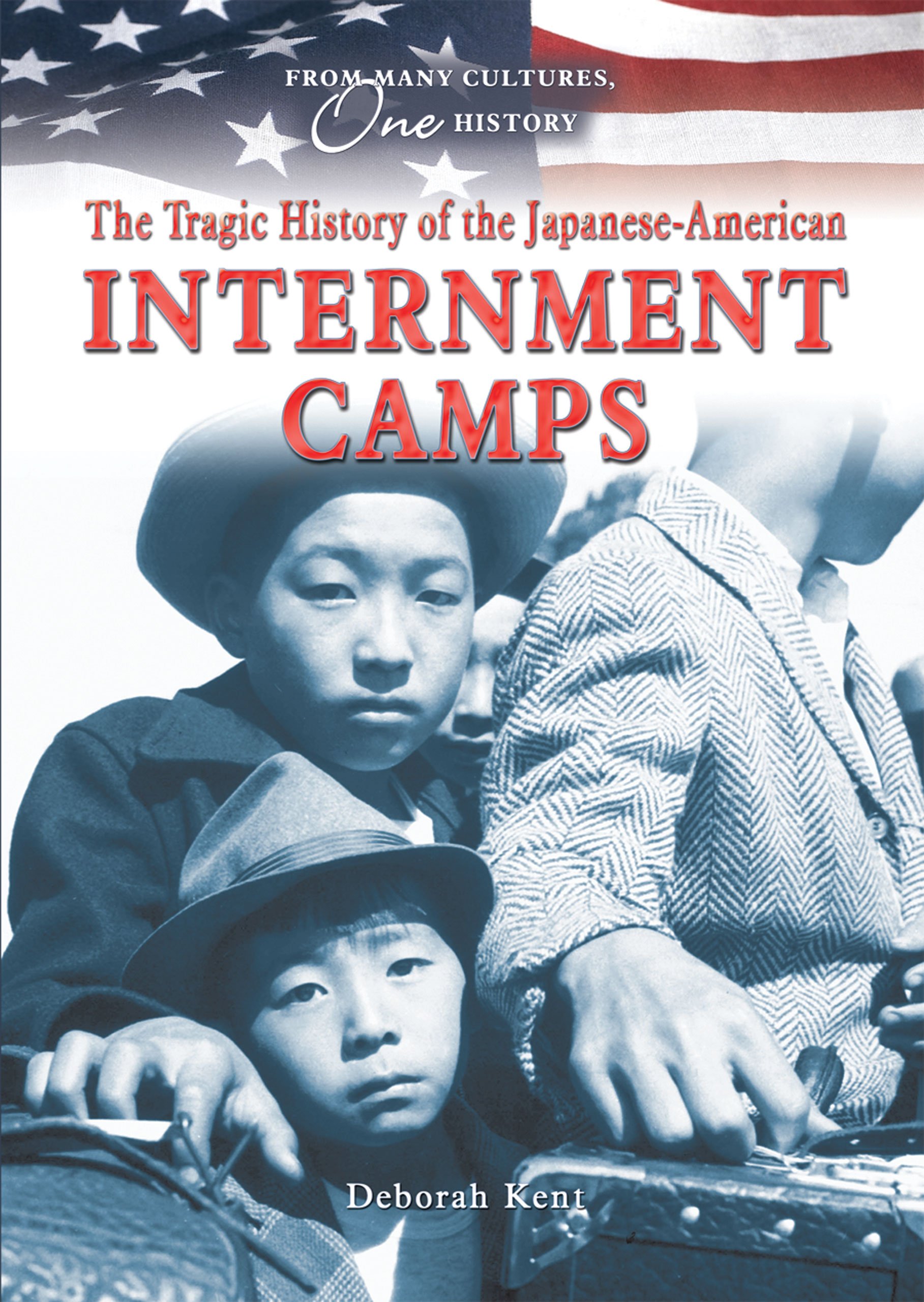The Tragic History of the Japanese-American Internment Camps (book)
Creators: Deborah Kent
Overview work on the Japanese American wartime removal and incarceration for middle school audiences that is part of Enslow Publishers' "From Many Cultures, One History" series.
Synopsis
The Tragic History of the Japanese-American Internment Camps tells its story in seven chapters. After an opening chapter that follows the Matsuda family from the attack on Pearl Harbor to their imprisonment in an " assembly center " (taken from Mary Matsuda Gruenwald's memoir ), the next two chapters cover the prewar history of Japanese Americans and the chain of events leading to Executive Order 9066 . Life in the War Relocation Authority (WRA) concentration camps is the subject of Chapter Four, while Chapter Five looks at unrest in the camps and those who left camp prior to 1945. The last two chapters examine the closing of the camps and return to the West Coast and the Redress Movement and legacy of the incarceration.
In addition to the main narrative, there are many sidebars on topics ranging from photographer of the incarceration experience to the so-called MAGIC cables . The book also includes a timeline, glossary, and suggestions for further reading and is illustrated with historical photographs.
Additional Information
Author Deborah Ann Kent (1948– ) has written over one hundred books for young people. Her first book was a semi-autobiographical novel titled Belonging (1978), about the transition of a blind middle-school student from special to regular classes. Kent, who has been blind all her life, has written several other titles on the experiences of people with disabilities. She has also written many books on U.S. history and geography.
The book draws on many sources and incorporates many Japanese American voices. But there are a number of errors and over-generalizations. Perhaps the most serious is the blanket claim that "the Kibei tended to have strong loyalties to Japan" (page 73), which reinforces the same stereotypes that U.S. government officials had of this group. Kent also claims that Japanese immigrants "had little wish to return to Japan" (15; many—if not most—early immigrants came with the intention of working for a few years and returning to Japan); that "[many] German and Italian citizens were also removed from the West Coast under Executive Order 9066" (40; the Alien Enemies Act of 1798 authorized the detention of enemy aliens, most of whom were arrested prior to EO 9066); and mischaracterizes the coram nobis cases by claiming that " Minoru Yasui 's petition was rejected by the courts" while Hirabayashi and Korematsu "saw their names cleared" (103; though technically true, Yasui's conviction was still vacated and his name also cleared). Other minor errors: referring to Santa Anita Assembly Center as "Arcadia Assembly Center" (52); in map of the camps, marking Merced as a WRA "relocation center" (59); repeatedly misspelling the name of Topaz shooting victim James Wakasa as "Nakasa" (61); claiming that a " block consisted of fourteen barracks" (64: depending on the camp, blocks had anywhere from twelve to twenty-four barracks); citing the lowest rung of the WRA inmate pay scale as $13 (66; it was $12); claiming that only one Nisei won the Medal of Honor for service in World War II (80; twenty additional Nisei were awarded the medal in 2000); citing $400 million as the amount Japanese Americans lost as a result of the removal and incarceration (97; Japanese American Citizens League leader Mike Masaoka admitted to making up this figure in testimony in support of legislation that would become the Japanese American Evacuation Claims Act ); and some incorrect dates on the timeline, including 1964 as the date of the last evacuation claims case (114; it was 1965) and 1973 as the date of the first Manzanar pilgrimage (it was 1969).
A newer book by Kent and Charlotte Taylor titled The Internment of Japanese Americans (2016) is a slightly updated version of The Tragic History of the Japanese-American Internment Camps .
Might also like The Invisible Thread by Yoshiko Uchida; Dear Miss Breed: True Stories of the Japanese American Incarceration During World War II and a Librarian Who Made a Difference by Joanne Oppenheim; Weedflower Cynthia Kadohata
Find in the Digital Library of Japanese American Incarceration
The Tragic History of the Japanese-American Internment Camps
This item has been made freely available in the Digital Library of Japanese American Incarceration , a collaborative project with Internet Archive .
| Author | Deborah Kent |
|---|---|
| Pages | 128 |
| Publication Date | 2008 |
